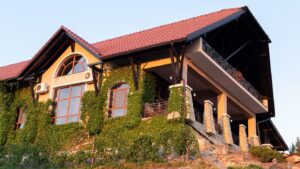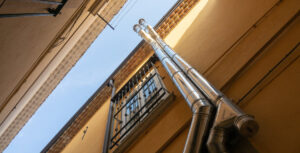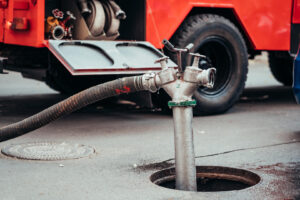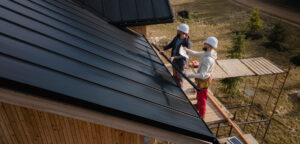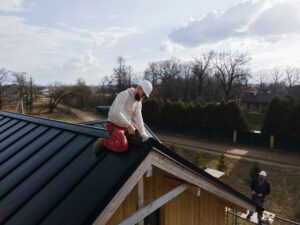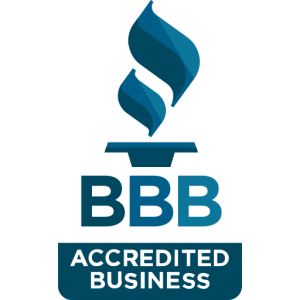How to Stop Water Leakage on Your Roof: 5 Effective Tips
Water leakage is a common problem that affects many homeowners. It can cause significant damage to the roof and internal structures if not promptly addressed. Persistent water leakage on your roof is a clear indication that your residential roofing may need replacement. It suggests underlying issues such as deteriorated shingles or compromised structural integrity.
To mitigate this, regular inspections are crucial to identify potential issues. Addressing the problem promptly with a professional assessment at Quality Home Restorations Inc. can help determine if a roofing replacement is necessary to prevent further damage.
We will discuss some effective strategies to stop water leakage on your roof. By following these steps, you can prevent costly repairs and maintain your property’s
structural integrity. Let’s get started:
5 Easy Maintenance Tips to Extend the Lifespan of Your Roof
Regular Inspection: Check for any signs of wear and tear, such as cracked shingles or loose flashing. Regular roof inspections are crucial for preventing water leakage. By identifying and addressing issues early on, such as damaged shingles, deteriorated flashing, or clogged gutters, you can mitigate the risk of leaks.
Inspections allow for prompt repairs, ensuring the roof’s integrity and preventing water infiltration. This proactive approach not only extends the lifespan of the roof but also safeguards the interior of your home from potential water damage and costly repairs.
Clean Gutters: Clogged gutters can cause water to back up and pool on your roof, leading to leaks. Clean them regularly. Clogged gutters can lead to water backup, causing overflow onto the roof and potential damage. Regular cleaning ensures proper drainage, preventing water from seeping under shingles or compromising the roof’s integrity.
By maintaining clean gutters, you reduce the risk of water accumulation, minimize the likelihood of leaks and protect your home from water-related issues such as rot, mold, and structural damage.
Seal Cracks: Use caulk or roofing cement to seal any cracks or gaps in your chimney, vents, or skylights to prevent leaks. Sealing cracks is a proactive measure to halt water leakage on your roof. By identifying and sealing cracks in the roofing material or around flashing, you create a barrier against water infiltration.
This preventative action prevents moisture from seeping into the underlying structure, averting potential leaks. Regular inspections and timely sealing of any identified cracks are essential to maintaining the roof’s integrity and ensuring long-term protection against water damage.
Replace Damaged Shingles: Damaged or missing shingles can cause leaks. Replace them promptly to prevent water damage. Damaged or missing shingles create vulnerabilities, allowing water to penetrate the underlying structure. This proactive approach safeguards the integrity of your roof, enhancing its ability to withstand the elements and extending its overall lifespan.
Regular inspections for damaged shingles and timely replacements are key to maintaining a leak-free roof. Prompt replacement ensures a watertight seal, preventing further leaks and potential interior damage. Replacing damaged shingles is a critical step in halting water leakage on your roof.
Monitor Attic and Ceilings: Regularly inspect your attic and ceilings for signs of water damage. If you notice any, address it immediately to prevent leaks. Regularly monitoring the attic and ceilings is instrumental in preventing water leakage on your roof. Water stains, mold, or dampness in these areas indicate potential roof issues. Early detection allows for timely intervention, addressing leaks before they escalate.
Monitoring ensures that any signs of water damage are promptly identified, enabling proactive repairs. This vigilance helps maintain the roof’s integrity, preventing further structural damage and safeguarding your home from the consequences of water infiltration.
The Bottom Line In conclusion, water leakage on your roof poses a significant threat to your home’s structural integrity. Regular inspections, prompt repairs, and regular maintenance are key factors in preventing water leakage. Remember, a small leak can rapidly escalate into a serious issue, so it’s essential to address these issues beforehand.
Need help? Feel free to get in touch with our expert team at Quality Home Restorations Inc. for residential roofing restoration services. As your local roofing contractors, we are dedicated to providing the best workmanship for your residential needs. Contact us to schedule an appointment today!
